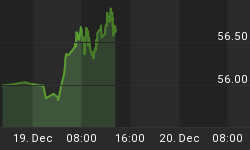There is still an incredible amount of misunderstanding on Wall Street about the relationship between the price of gold and the true value of the U.S. dollar. Most pundits simply claim that a rising dollar, as measured by the Dollar Index (DXY), causes gold prices to fall...and that is the end of their analysis.
In truth, the dollar's intrinsic value carries the most weight in determining the price of gold and not simply how the dollar is faring vis a vis a basket of other fiat currencies. According to many market analysts, the 5% rise of the dollar on the DXY since February has been attributed to the return of "king dollar" and that, as they claim, is why gold prices are falling. But they simply choose to overlook the fact that the economies of our major trading partners are in recession and the Bank of Japan's monetary policy is more aggressive in relative terms towards the depreciation of the Yen than our Federal Reserve is to the dollar. The BOJ will increase the size of its balance sheet by $1.4 trillion by the end of 2014. Our Fed may end up doing the same but the Japanese economy is just one third the size of the U.S.
Nevertheless, the intrinsic value of the dollar is being eroded at a record pace, despite what is evidenced from merely looking at the DXY. There has been no change in the Fed's zero interest rate policy and no diminution of its $85 billion per month pace of debt monetization. National deficits continue to rise ahead of nominal GDP growth and persistently weak employment data (more evidence was displayed from the March NFP Report released on Friday) should keep the Fed's level of QE unabated for at least several more quarters to come. In addition, the nominal interest rate on the One-year Treasury is below .15%, while the rate of inflation recorded a 2% YOY increase in February. Therefore, real interest rates remain firmly in negative territory and the real value of the dollar is falling against gold.
Some market analysts also claim that the Fed and Treasury should print and borrow more money, so much so, that the dollar would lose value even as it is measured against the Euro, Pound and Yen. They not only believe a falling dollar will help boost GDP growth and balance the trade deficit; but also contend a weakening currency only produces a negative effect on U.S. consumers if they purchase foreign goods, or while they are on vacation abroad. But there isn't any evidence to suggest that you can balance a current account deficit by lowering the value of your currency or boost GDP growth either. Also, this theory shows a complete lack of understanding about the true effects of currency devaluation. Printing money to lower the value of your currency creates domestic inflation, not only because (all things being equal) import prices should rise; but also due to the fact that commodity prices, which are limited in supply, must increase in response to the increase in money supply.
To prove this simple point that investors should not just look at the dollar's value as measured against other fiat currencies in order to determine its value, just imagine what would happen if there was just one world currency controlled by one central bank. These same pundits would have to claim that inflation is impossible to occur under a one-currency regime because rising prices can only come from a falling currency relative to another--and that can't occur if there is only one currency in use. Therefore, they also must contend that this global central bank could increase the money supply by any amount it desired without any negative ramifications on consumers' purchasing power.
But if the monetary base of this global currency were to double every year--not such a stretch given what the Fed and BOJ are up to--aggregate price levels would eventually surge given the massive increase of the money supply in relation to the supply of goods and services available for consumption. This is especially true for rare commodities like PMs, whose supply cannot be expanded at the same rate of monetary creation.
Dollar holders should find zero solace from owning a currency that is only gaining value against other pieces of confetti called Euros, Pounds and Yen and investors will soon realize the absurdity of believing the dollar is strong simply because other fiat currencies are currently weaker. This is why money flows into precious metals will become massive once again as the intrinsic value of the dollar continues to diminish under the weight of the $17 trillion national debt and $1 trillion yearly deficits that are being monetized by the Fed.















